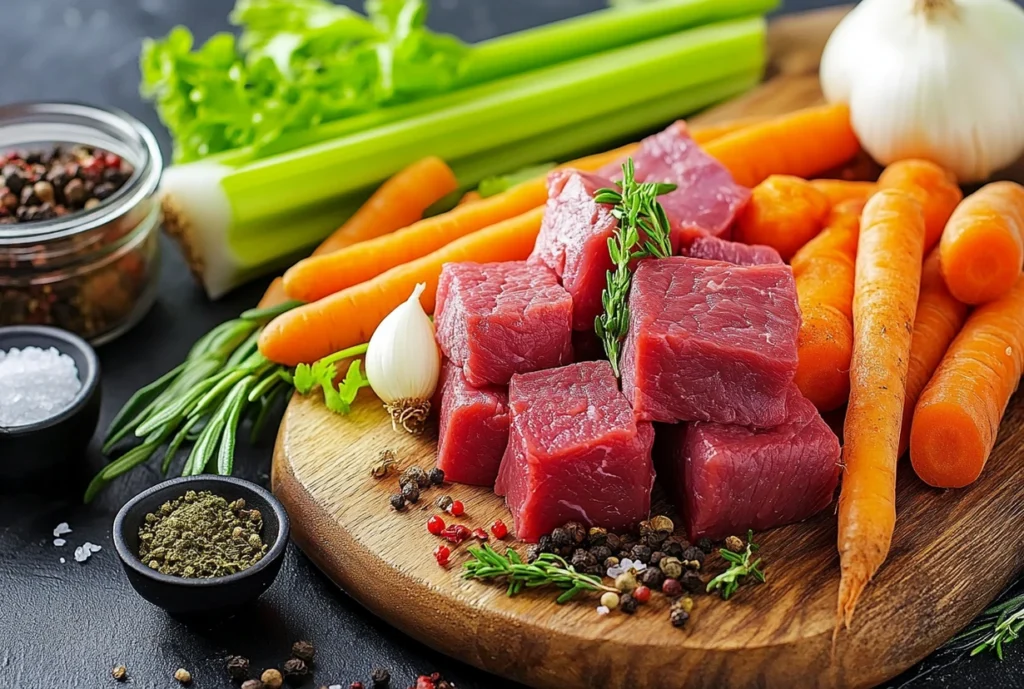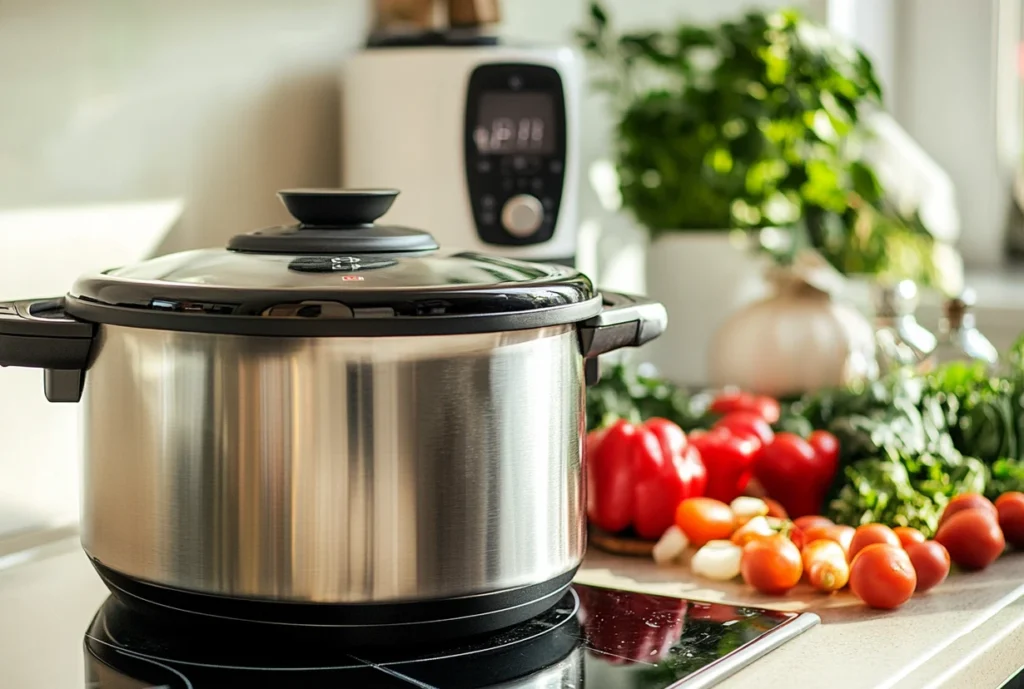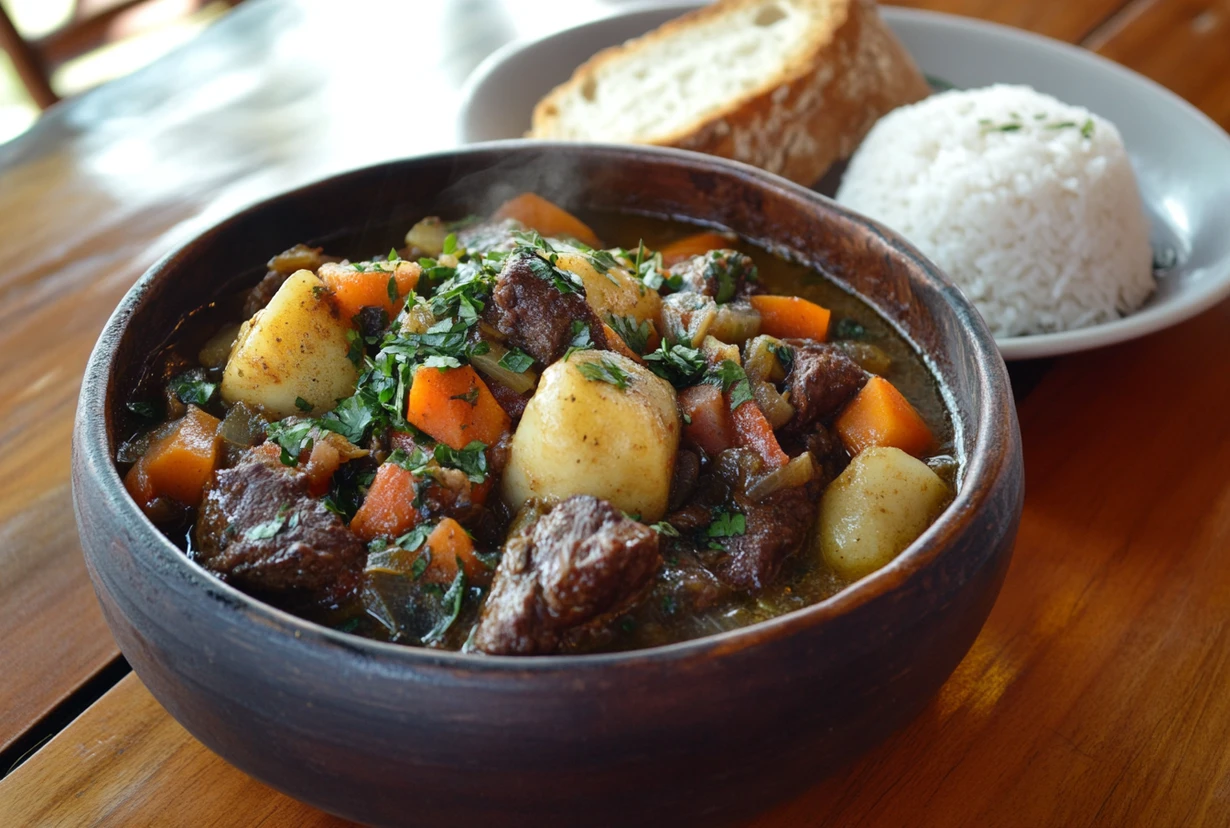Making a good stew isn’t just about combining ingredients—it’s about creating harmony in flavors, textures, and aromas. In this guide, we’ll explore the secrets to crafting stews that are rich, hearty, and absolutely delicious.
Introduction
What’s the secret to making a good stew? This question has intrigued home cooks for generations. A stew is more than just a dish—it’s a blend of flavors, textures, and techniques that come together to create a comforting masterpiece. Whether it’s a rich beef stew, a vegetable medley, or a classic chicken variation, the key to success lies in balancing quality ingredients with thoughtful preparation.
In this guide, we’ll walk you through the steps to elevate your stew-making skills. From selecting the freshest produce to perfecting the simmering process, you’ll discover how to create a dish that’s as satisfying as it is flavorful. Prepare to impress family and friends with stews that are nothing short of exceptional!
1. The Foundation of a Good Stew
Choosing the Right Ingredients
The first step to a good stew is selecting high-quality ingredients. Fresh vegetables, well-marbled cuts of meat, and flavorful herbs are essential. For meat-based stews, choose cuts like chuck roast, lamb shank, or chicken thighs, as these become tender and juicy when cooked slowly. For vegetarian options, hearty vegetables like carrots, potatoes, and squash work beautifully alongside protein-rich legumes such as lentils or chickpeas.
Freshness matters, as the natural flavors of your ingredients will shine through in the final dish. When shopping, look for vibrant vegetables without blemishes and meat with a bright, even color.
Balancing Flavors
The secret to a stew that delights every bite is the perfect balance of flavors. A combination of savory, sweet, and umami creates depth. Ingredients like caramelized onions, garlic, and tomato paste provide a savory base, while a splash of wine or a spoonful of honey can add subtle sweetness.
Don’t forget herbs and spices! Bay leaves, thyme, rosemary, and paprika can elevate your stew. Add a pinch of salt early in the cooking process and adjust as the flavors develop.
Pro Tip: Let the stew rest for a few minutes after cooking—it allows the flavors to meld together beautifully.2. The Art of Preparation
Browning Ingredients
One of the biggest secrets to a good stew is browning your ingredients before simmering. This simple step adds layers of flavor to your dish. When you brown meat, the high heat creates a caramelized crust through a process called the Maillard reaction, enhancing the richness of your stew.
To do this, heat a small amount of oil in your pot, then sear the meat in batches to avoid overcrowding. Remove the meat and use the same pot to sauté your onions, garlic, and other aromatics. The flavorful bits left at the bottom of the pot will contribute to your stew’s depth.

Building Layers of Flavor
A stew’s complexity comes from how you layer the flavors. After browning, deglaze the pot with a liquid such as broth, wine, or even water to lift all the caramelized bits. Add your base ingredients, like tomatoes or stock, followed by vegetables, meat, and seasonings.
Each ingredient should enhance the others. For instance, adding acidic elements like tomatoes early on balances the richness of the meat. Save delicate herbs, leafy greens, or cream for the final stages of cooking to preserve their flavors.
Key Tips for Preparation
- Cut ingredients evenly: This ensures everything cooks at the same rate.
- Toast spices lightly: If using dried spices, toast them in oil for a minute to release their aromas.
- Don’t rush: Stew-making is a slow process that rewards patience.
Pro Tip: Stir occasionally, but don’t overdo it—over-stirring can break down tender vegetables and make the stew too thick.3. Timing is Everything
Low and Slow Cooking
The hallmark of a good stew is its tender ingredients and deep, developed flavors—and that takes time. Slow cooking, whether on the stovetop, in the oven, or using a slow cooker, allows the flavors to meld and intensify. Simmering over low heat prevents overcooking and keeps the meat juicy while breaking down tough connective tissue.

For stovetop cooking, maintain a gentle simmer rather than a boil to avoid toughening the meat or turning vegetables to mush. If using a slow cooker, set it on low for six to eight hours for the best results.
When to Add Ingredients
Timing is critical when it comes to adding ingredients to your stew. Start with your base—onions, garlic, and hard vegetables like carrots and celery—as they need more time to soften and infuse their flavors.
Add meats early in the cooking process to allow them to tenderize. Reserve quick-cooking vegetables, such as zucchini or peas, and fresh herbs like parsley or cilantro for the last 20–30 minutes. This ensures they retain their texture and vibrant flavors.
Signs Your Stew is Ready
- Meat: It should be fork-tender, breaking apart easily without resistance.
- Vegetables: They should be soft but still hold their shape.
- Consistency: The broth should be thick and rich, not watery or overly sticky.
Tips for Perfect Timing
- Check the stew occasionally to ensure it isn’t sticking to the bottom.
- If the liquid level drops too much, add a splash of broth or water.
- Allow the stew to rest for 5–10 minutes before serving to let the flavors fully meld.
Pro Tip: Always taste your stew as it cooks to adjust seasoning at the right time. Flavors evolve, so a little salt or spice at the end can make a big difference.4. The Role of Liquids
Choosing the Right Base
The liquid base is the heart of a good stew. It ties all the ingredients together and determines the dish’s flavor and texture. Common bases include:
- Broth or Stock: Chicken, beef, or vegetable stock adds a depth of flavor. Opt for homemade or low-sodium versions to control salt levels.
- Tomato-Based Liquids: Crushed tomatoes, tomato paste, or even a splash of tomato juice add acidity and richness.
- Wine or Beer: These contribute complex, bold flavors. Red wine pairs well with beef stews, while white wine or light beer complements chicken or seafood-based stews.
- Coconut Milk: For a creamy, tropical touch, coconut milk works beautifully in spiced or curry stews.
Choose your liquid based on the flavor profile you’re aiming for. For example, a hearty beef stew might call for red wine and beef stock, while a vegetable stew might benefit from a light vegetable broth.
Adjusting Consistency
The perfect stew strikes a balance between thick and soupy. Here’s how to adjust consistency:
- Thicken the Stew: Use a slurry made of flour or cornstarch mixed with water. Stir it in during the final 15–20 minutes of cooking. Alternatively, mash a few potatoes or beans into the stew to naturally thicken it.
- Thin it Out: If your stew becomes too thick, add more liquid in small increments—broth, water, or even milk, depending on the dish.
Layering Flavors with Liquids
Rather than adding all your liquid at once, try adding it gradually. Start with just enough to cover the ingredients, then top it off as needed. This method allows you to monitor the consistency and flavor throughout the cooking process.
Pro Tip: Always simmer with the lid slightly ajar to allow the liquid to reduce and concentrate the flavors.Finishing Touches
Before serving, taste the broth and make final adjustments. A squeeze of lemon, a dash of vinegar, or even a pinch of sugar can balance the flavors beautifully.
Pro Tip: If the stew feels flat, add a splash of soy sauce or Worcestershire sauce for an umami boost.5. Seasoning and Final Touches
Perfecting the Flavor
Seasoning is where a good stew transforms into an exceptional one. Here’s how to ensure every bite bursts with flavor:
- Salt: Add small amounts throughout the cooking process, not just at the end. This helps the salt penetrate and enhance all the ingredients.
- Herbs and Spices: Use dried herbs like thyme, bay leaves, or oregano early in cooking to allow their flavors to bloom. Fresh herbs, such as parsley or basil, should be added just before serving for brightness.
- Acidity: A splash of vinegar, lemon juice, or even a dollop of mustard can brighten the stew and balance its richness.
Common Flavor Boosters
Here’s a quick reference table of ingredients that can elevate your stew:
| Ingredient | Effect on Flavor | When to Add |
|---|---|---|
| Soy sauce or tamari | Adds umami depth | Mid to late cooking |
| Worcestershire sauce | Boosts savory and tangy notes | Mid to late cooking |
| Sugar or honey | Balances acidity and adds mild sweetness | Adjust near the end |
| Citrus zest (lemon, lime, orange) | Adds freshness and vibrancy | Just before serving |
| Hot sauce or chili flakes | Adds heat and complexity | As desired throughout |
Garnishing for Impact
A thoughtful garnish can elevate your stew’s presentation and taste. Consider:
- Fresh Herbs: Sprinkle chopped parsley, cilantro, or dill for color and flavor.
- Crunchy Toppings: Croutons, toasted nuts, or fried shallots add texture.
- Creamy Additions: A dollop of sour cream, yogurt, or crème fraîche can balance spicier stews.
Pro Tip: Serve your stew with crusty bread, rice, or mashed potatoes to soak up every last bit of goodness.6. FAQs About Making a Good Stew
1. What cuts of meat are best for stew?
Cuts like chuck roast, lamb shank, or chicken thighs are ideal for stews because they contain connective tissue that breaks down during slow cooking, resulting in tender and flavorful meat.
2. Can I make a stew without a slow cooker?
Absolutely! You can prepare a stew on the stovetop or in the oven. For stovetop cooking, keep it at a low simmer. For oven cooking, use a heavy pot with a lid and cook at 325°F (163°C).
3. How do I fix a stew that’s too salty?
Add a raw potato or an extra cup of unsalted broth to absorb some of the salt. You can also balance it with a splash of vinegar or a pinch of sugar.
4. How do I thicken a watery stew?
To thicken a stew, mix a tablespoon of flour or cornstarch with water to create a slurry, then stir it into the stew. Alternatively, mash a portion of the vegetables or beans in the stew to naturally thicken it.
5. Can I freeze leftover stew?
Yes! Stew freezes well and can be stored for up to three months. Allow it to cool completely before transferring it to an airtight container. Thaw in the fridge overnight before reheating.
6. Why is my stew bland?
A bland stew often lacks seasoning or flavor depth. Taste and adjust with salt, spices, or a splash of acidity like lemon juice or vinegar. Adding umami boosters like soy sauce or Worcestershire sauce can also help.
Conclusion: Mastering the Secret to a Good Stew
A good stew is a labor of love, combining fresh ingredients, thoughtful preparation, and patience. By choosing the right base, layering flavors, and taking your time with slow cooking, you can create a dish that warms the soul and impresses the taste buds. Don’t be afraid to experiment with different ingredients, herbs, and spices to make the recipe your own.
If you’re looking for inspiration, check out this Tomato Beef Stew Recipe for a flavor-packed family favorite! With these secrets and recipes in hand, grab your favorite pot, gather your ingredients, and let the magic of stew-making begin!

